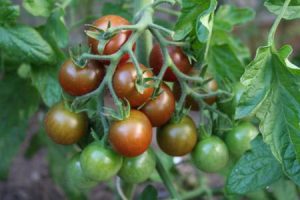Discover the many benefits of gardening all seasons. This guide shares easy gardening tips for growing plants year-round, including winter gardening ideas for beginners. Achieve a thriving garden 365 days a year.
As the weather turns cooler, you can start planting new crops to take advantage of the growing season. Asparagus, for example, is a great early-season crop. Make sure to water it regularly and fertilize it with a seaweed mix every couple of weeks.
You can also install a drip irrigation system to minimize watering time. This will ensure your plants remain healthy and happy, even when the weather turns cold.
Best Benefits of Gardening Year Round
 Another great benefit of gardening year round is the ability to grow a diverse array of fruits and vegetables. While the produce you buy in the store is typically bred for durability and taste, you can grow unique varieties that will enhance your meals. Some of these include Mediterranean fruits, tea, chayote squash, and more.
Another great benefit of gardening year round is the ability to grow a diverse array of fruits and vegetables. While the produce you buy in the store is typically bred for durability and taste, you can grow unique varieties that will enhance your meals. Some of these include Mediterranean fruits, tea, chayote squash, and more.
You can even grow some of your favorite plants in containers indoors. This is a great way to have fresh produce all year round.
Besides vegetables, you can grow fruits and grains throughout the year. To grow fruits and vegetables all year round, you must consider the type of climate you live in. Different climates call for different varieties of plants.
A local gardening center can offer information about the climate and the right crops for your area. Depending on the time of the year, you can also grow certain vegetables that are suited to your area. If you’re unsure about the right time of year for certain crops, consider using a calendar to plan your gardening activities.
Winter is a great time to start planting your garden. Most plants are planted in the spring or summer, but you can plant a variety of crops even during the winter months. The key is to plant in the right spot at the right time.
The fall is the best time for raking leaves and straw, which make for a great mulch. Mulch should be piled at least 18 inches high and settle to 12″ before planting.
When planning your garden, keep an eye out for pests. Insects can destroy your crops if they’re not properly managed. If you find pests on your plants, you should destroy them or cover them up with row covers.
You can also use companion plants to attract beneficial insects and wildlife to your garden. By doing this, you can help the plants to create an ecosystem and attract pollinators.
You don’t need to spend a lot of money to maintain your garden. Using a calendar will make the process easier. In addition, you can also find help from gardening communities. These groups can provide tips and advice to help you grow your garden year round. You’ll be amazed at the results!
Growing vegetables and flowers in your garden is possible throughout the year, so long as you take care of certain things. Using protective covers can also help prevent disease and pest problems, and prevent plants from getting damaged and dying.
In addition to covering your beds, it is also essential to keep your bareroot plants from getting too hot. Make sure you sterilize your garden tools before planting.
When it comes to planting vegetables, most people plant their summer garden in mid-spring. However, you can also plant vegetables like spinach, broccoli and carrots in the fall. This type of planting requires more water than spring crops, as the sun is more intense during this season.
The best time to plant vegetables is two months before the average date of a last frost. Once these plants reach maturity, you can harvest them throughout the winter.
Gardeners can also grow certain crops in colder climates. Winter squashes and peppers are hardy enough to survive in the winter. But if you live in a place where the temperature falls below freezing, you can also plant Brussels sprouts and kale into the fall.
A popular variety is ‘Dwarf Siberian’ kale, which stays low even under snow protection. However, many gardeners still try to plant late in the year, but this rarely yields good crops. For best results, it is best to plant before the first frost in the fall. If you do plant late, you should make sure you have protection devices to keep your crops going.